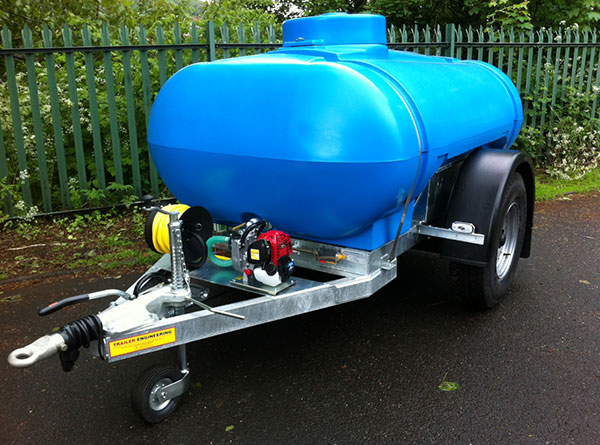Water transport is one of the most important parts of Australian farming. No matter the size of your farm and the type of crops you’re growing, water cartage trailers are probably the best way to move water from one place to another. Water trailers come in a wide range of shapes and sizes, and depending on how much water you need to carry, and where you need to carry it, your choice for a water trailer will vary. These crucial pieces of equipment can transport water for irrigation, fire prevention during bushfire season, dust suppression, and so on. To choose the ideal type of water cartage trailer, you need to consider a few factors.
Types of Water Cartage Trailers
There are two basic types of water trailers, based on where they’re intended to be used – on- and off-road trailers. Even though their names are self-explanatory, there are subtle differences that make one more suitable than the other in certain areas. Regardless of type, water trailers are available as single and tandem axle models, and they can be custom-built to suit specific applications. Before buying, you should rent the trailer if possible and give it a test run in the area that you’ll most frequently use it at.

Off-road water cartage trailers are mainly used in rural areas where unpaved roads are a common sight. They’re also used in mining operations and at construction sites. As you can see, these are quite versatile pieces of equipment, and they’re used in a range of important industries. These trailers are typically equipped with off-road tyres, and they’re made using durable materials to ensure they can withstand the harsh weather and environment. Off-road water trailers are further divided into two sub-categories – skid-in water cartage trailers and stand-alone water carts that are directly attached to off-road trailers. Besides the tyres, off-road water trailers feature more flexible suspension, allowing for smoother transport. Further, these trailers typically have a large water capacity. On the downside, they aren’t the best-suited option for roads, as you’ll probably need a flatbed to safely transport them.
On-road water trailers, as their name implies, are reserved for use on paved roads. These trailers don’t need to be as durable, so they’re more uniformly square, allowing you to store them on the fray of your truck. Their size can range from 1.000L to over 20.000L.

How to Safely Transport Water Trailers
Water trailers can be a menace to transport, which is why there are a few steps you should consider before you jump in your truck. This is simply because the water trailer can become a hazard during certain circumstances, no matter how solid and durable it is. For starters, you should always check your vehicle before setting out. Even if the water trailer is smaller in size, the water weight is fixed. Most pick-up trucks can haul trailers with a capacity of 6000L, but if you’re transporting more, you might have to get a truck with a flatbed load bin. Anything over 10,000L will require a larger truck.

Next, you have to consider the trailer position. Water trailer tanks can be huge, and as a result, your ride’s aerodynamics will be significantly altered. This will also impact fuel economy. Avoid getting a water tank trailer that’s too large, unless you truly need to transport large quantities of water. Furthermore, while hauling a water tank, don’t drive over 100km/h. Typically, the recommended speed at which you should go is 80km/h on open roads, and if you’re driving off-road, stick to speeds of below 50km/h. It also goes without saying that you should abide by traffic rules, pay extra attention when on a corner, and know that your vehicle will handle slightly differently with the added weight in the back.
How to Clean a Water Trailer
Sometimes, the water you’re transporting in the trailer needs to be clean. Contaminating water is relatively easy, so you need to take certain precautions. First and foremost, you have to know what type of water is being transported. If it’s potable water, cleaning it can be more difficult, as it will probably need to be cleaner than other types of water. You clean the water trailer by emptying the trailer completely, and using household detergent in combination with hot water. You can pressure clean out most of the trailer, and you might have to stiff brush the more hard-to-reach areas. Make sure you clean the hose as well, as they can gather grime. Next, disinfect the tank and run the disinfectant through the pipes for about an hour. This will make sure the cranny, nook and pipes are clean and free of any disinfectants or other chemicals used in the cleaning process. Once you’ve done that, rinse the trailer with clean water. As aforementioned, if you’re going to transport potable water, rinse the trailer with potable water as well.

